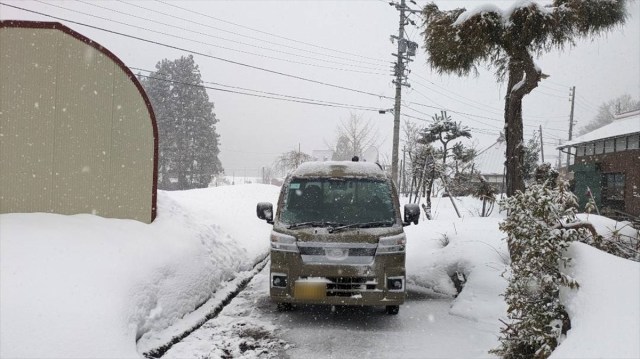
Locals teach us how to live comfortably in areas that experience heavy snowfall.
Japan is known for its four seasons, but not everyone in the country experiences a winter filled with snow. So when people from more temperament regions travel to colder climes during winter it can be an eye-opening experience.
Our reporter Haruka Takagi, who’s lived all her life in relatively warm areas of Japan along the Pacific Ocean, is one such person whose eyes were recently opened to the ways people in cold regions deal with heavy snowfall, after she visited a friend in Nagano Prefecture during a snowstorm.
▼ Haruka’s mode of transport while travelling around the area was a 4-wheel drive kei (“light”) vehicle.
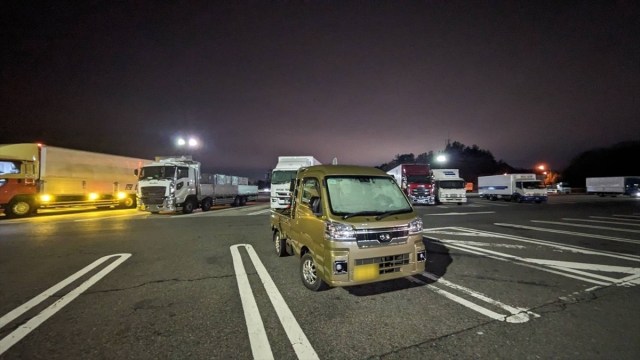
With heavy snow forecast for the afternoon, Haruka’s first introduction to local countermeasures came in the form of a hose system, which was spraying water out all over the parking lot of a convenience store.
▼ This was the first of six clever snow-coping mechanisms Haruka would discover during her stay.
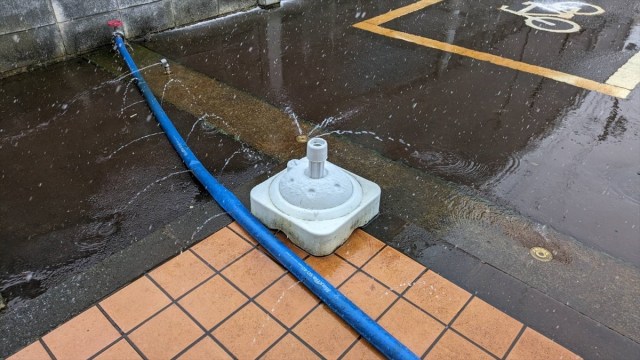
Not only was the water being sprayed from the hose, it was being pushed out from holes in the cement as well. Haruka soon learned that these sprinkler systems use groundwater to melt the snow, as water below the surface is naturally warmer than that above ground, making them common in snowy areas around Japan.
▼ These sprinklers are usually seen on public roads so it’s still quite unusual to see them in parking lots like this one.
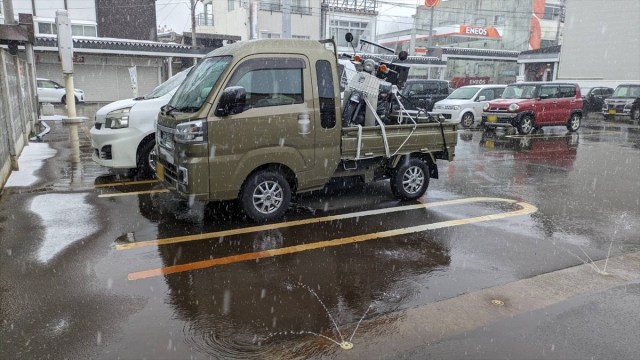
When snowy areas experience heavy snowfall, you can expect the whiteness to descend quickly, and that’s what happened when Haruka made her way through the windy roads to her friend’s house.
▼ The snowflakes were huge so it didn’t take long for the roads to be covered in snow.

Thankfully, Haruka had come prepared with studless tyres on her vehicle, a must when travelling to snowy regions. These tyres have deeper and more numerous grooves, giving them better drainage and grip, and they’re also cold-resistant, staying soft in low temperatures as opposed to regular tyres, which will harden in extremely cold environments.
Haruka thought the studless tyres worked amazingly well as they gripped the road and helped her feel safe even in the heavy snowfall, making her realise why they’re such a must-have for people living in cold areas.
After arriving at her destination safe and sound, Haruka was so exhausted from concentrating on the drive that she left her bike on the back of the truck and napped under her friend’s heated kotatsu table until evening.
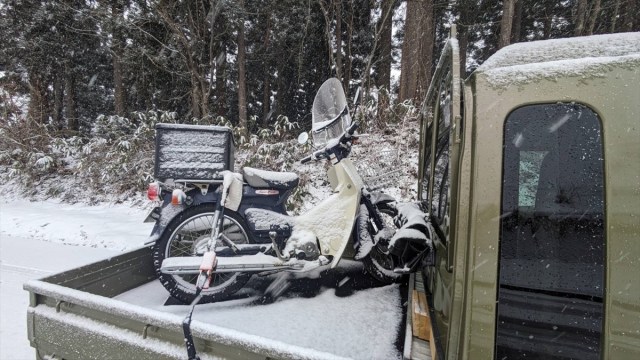
She’d planned to meet friends at a nearby onsen hot spring that evening, but when she left the house at around 7 p.m., she found herself up to her knees in snow.
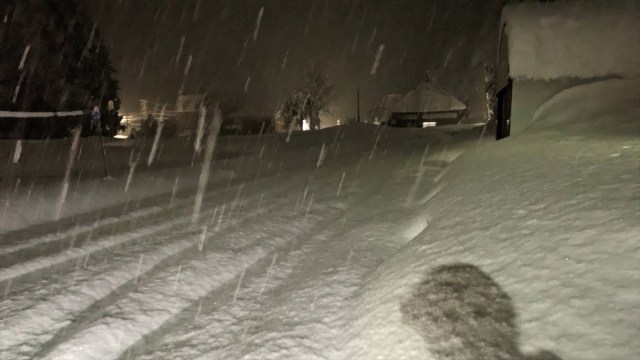
Thankfully, she was able to borrow her friend’s rain boots because she’d foolishly come with only a pair of sneakers, but the snow was still so heavy that the icy particles slipped through the gap between her boots and tucked-in trouser hems.
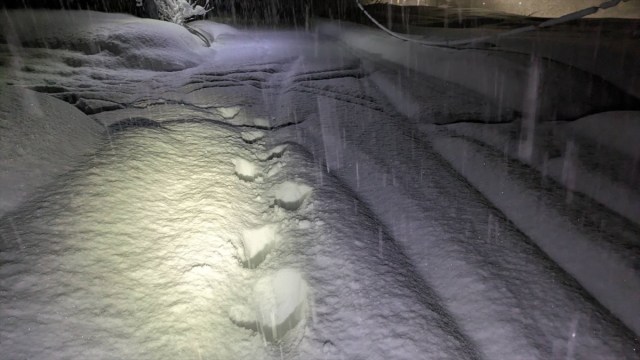
There was no way she’d be able to drive to the onsen in this weather, but now that she was out here she decided to retrieve her glasses, which she’d left in her car.
However, when she went to get them, she realised her car, which was parked behind the white one below, was completely surrounded by large mounds of snow, making it impossible for her to open the door.
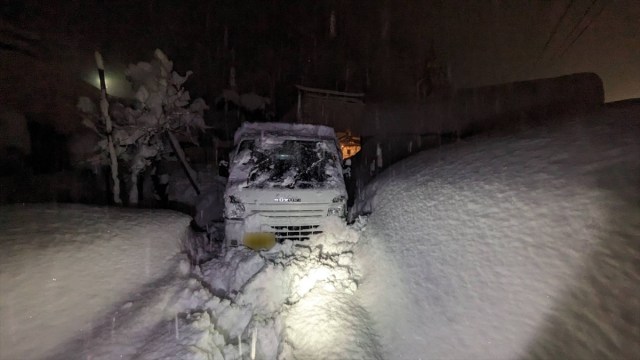
She borrowed a plastic shovel and dug around the door in an attempt to open it, but her friend had a better idea, coming to her aid with…
▼…a personal snow blower.
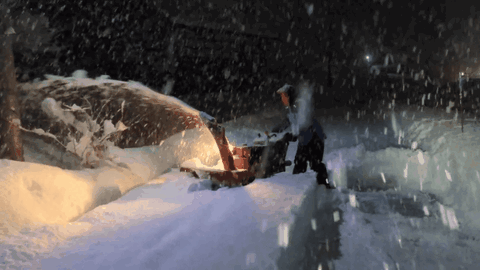
Haruka couldn’t believe her eyes, as she’d never known anyone to actually own their own snow blower, but her friend simply told her, “It’s not at all that uncommon around here”. According to her friend, even the elderly grandma who lives across the street from them operates a snow blower with ease, so it’s a daily necessity in winter that locals don’t bat an eye at.
▼ It worked like a charm, clearing enough snow from the path to allow better access.
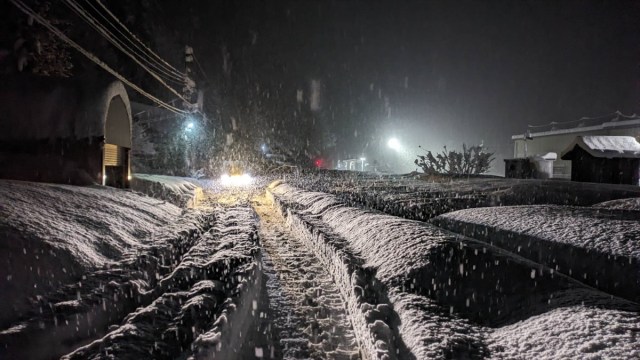
Just a few hours in the snow made Haruka realise how much she took her easy city life for granted. People in these snowy environments seemed to have such a strong get-up-and-go attitude by comparison, barely complaining about the inconvenience of having to operate machinery in freezing temperatures whereas she tends to grumble about having to leave the house when it’s only slightly cold.
As the night wore on and the snow began to cease, Haruka could hear the rumble and thud of snow falling from the roof, which shook the house with every drop. That’s when her eyes were opened to another way people deal with heavy snowfall — small ponds known as “tane”.
These ponds are traditionally set up on the north side of a home, with the theory being that snow on this side, which gets less sunlight, can become hard and compacted, making it difficult to remove. These ponds prevent snow from piling up on this side of the building, and many are often fed by natural spring water, helping to melt any snow that falls into them, thereby safeguarding the house and its residents.
▼ In summer, the ponds look beautiful with carp swimming in them to prevent stagnation, but in winter, they’re vital for melting ice.
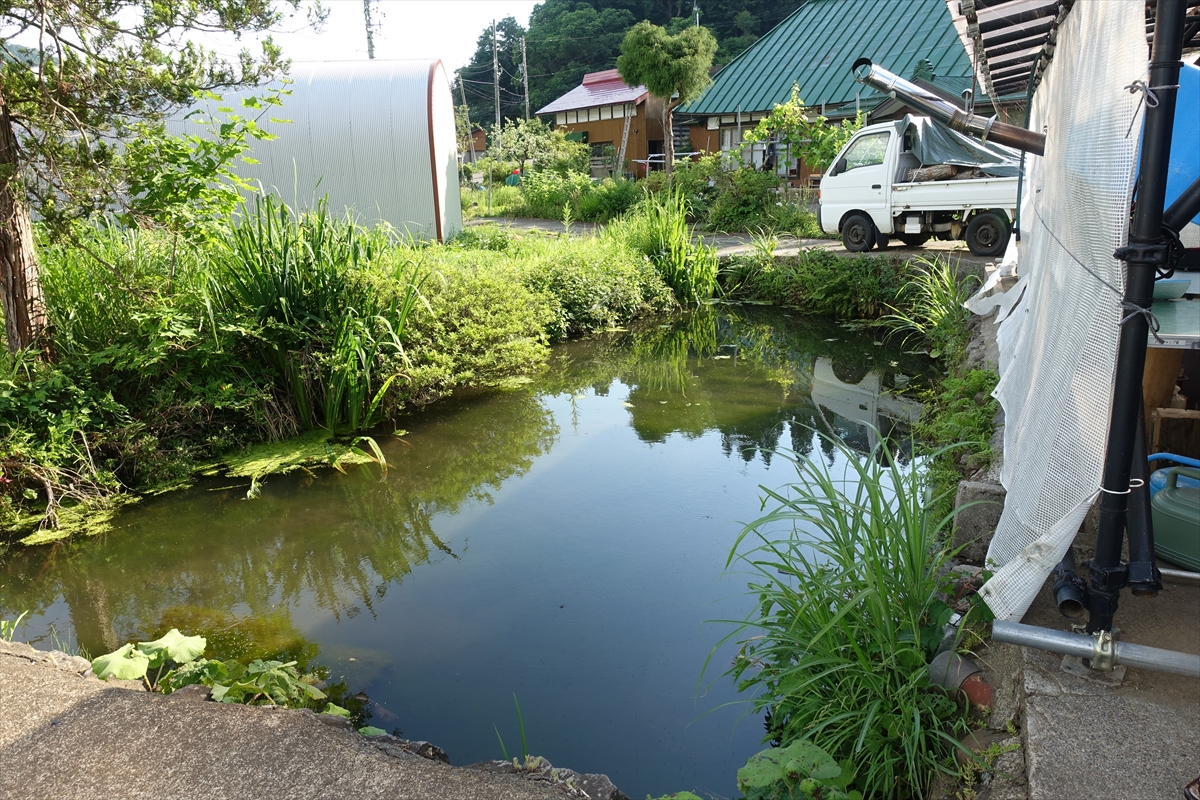
By morning, the snowfall had stopped and thanks to the fast and efficient snow removal service provided by the city, the roads were cleared to the point where the asphalt was visible. Thanks to this public service, Haruka was able to walk along roads at the top of the mountains in just her sneakers, although she did slip a few times.
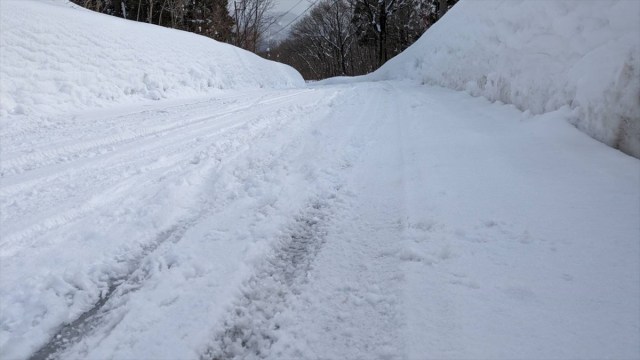
By the time she got to the city centre that night, the roads were clear, thanks to the use of snow melting agents, which made it as easy as driving in the rain.
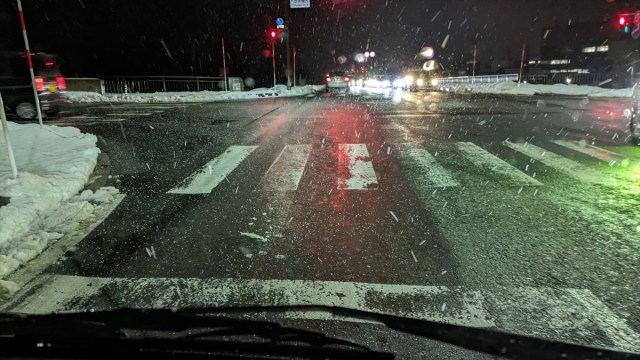
These salt-laden snow-melting agents can rust cars easily, so Haruka made a mental note to give her vehicle a good wash as soon as she returned home. When she drove away from the mountains and back to her city life, she reflected on the things she’d learnt during her trip, and realised she was returning with seven things she’d learned about dealing with the snow.
- The sprinkler systems are genius
- Studless tyres are a must
- Personal snow blowers will get you out of a jam in no time
- Traditional pond systems can be a literal lifesaver
- Snow removal by the city is fast
- Snow-melting agents help to clear roads but can rust vehicles
As for the seventh thing she’d learnt, it was that people who live in snowy regions are much stronger than she is, both physically and mentally. Coping with the many inconveniences that come with heavy snowfall requires resilience and a positive attitude, and now that she’s experienced this way of life firsthand, she plans to borrow that frame of mind to help her during her future travels. That way, she can better endure any possible hardships she might encounter…like that time she climbed Japan’s only highway staircase.
Photos ©SoraNews24
● Want to hear about SoraNews24’s latest articles as soon as they’re published? Follow us on Facebook and Twitter!
[ Read in Japanese ]

 What makes a good boss in Japan? Workers sound off in survey
What makes a good boss in Japan? Workers sound off in survey Things get heavy with the Gold Lucky Bag from Village Vanguard
Things get heavy with the Gold Lucky Bag from Village Vanguard Japanese beef bowl chain Sukiya’s 2026 Smile Box lucky bag basically pays for itself
Japanese beef bowl chain Sukiya’s 2026 Smile Box lucky bag basically pays for itself Top Japanese cosplayer Enako returns to Comiket after 6 years, creates mayhem with admirers
Top Japanese cosplayer Enako returns to Comiket after 6 years, creates mayhem with admirers Majority of Japanese mayors say foreign residents are essential but most see good and bad effects
Majority of Japanese mayors say foreign residents are essential but most see good and bad effects What makes a good boss in Japan? Workers sound off in survey
What makes a good boss in Japan? Workers sound off in survey Things get heavy with the Gold Lucky Bag from Village Vanguard
Things get heavy with the Gold Lucky Bag from Village Vanguard Japanese beef bowl chain Sukiya’s 2026 Smile Box lucky bag basically pays for itself
Japanese beef bowl chain Sukiya’s 2026 Smile Box lucky bag basically pays for itself Top Japanese cosplayer Enako returns to Comiket after 6 years, creates mayhem with admirers
Top Japanese cosplayer Enako returns to Comiket after 6 years, creates mayhem with admirers Majority of Japanese mayors say foreign residents are essential but most see good and bad effects
Majority of Japanese mayors say foreign residents are essential but most see good and bad effects Japan’s number-one cosplayer Enako makes jaws drop with ‘nude’ bath photo
Japan’s number-one cosplayer Enako makes jaws drop with ‘nude’ bath photo Japan’s two-month Shut-in Pilgrimage – A 1,200-year-old way to deal with a modern issue
Japan’s two-month Shut-in Pilgrimage – A 1,200-year-old way to deal with a modern issue The Japan Poop Society is making movements to protect people’s health
The Japan Poop Society is making movements to protect people’s health Cosplay costume room tour by Japan’s number-one cosplayer Enako is an eye-opener【Video】
Cosplay costume room tour by Japan’s number-one cosplayer Enako is an eye-opener【Video】 Believe it! Naruto live-action stage play returns, shows off huge new cast and costumes【Photos】
Believe it! Naruto live-action stage play returns, shows off huge new cast and costumes【Photos】 Starbucks Japan ready to get Year of the Horse started with adorable drinkware and plushies【Pics】
Starbucks Japan ready to get Year of the Horse started with adorable drinkware and plushies【Pics】 Hayao Miyazaki says Happy New Year to Studio Ghibli fans with new art for Year of the Horse
Hayao Miyazaki says Happy New Year to Studio Ghibli fans with new art for Year of the Horse Cup Noodle tries an authentic Jiro-style ramen, but something’s not quite right
Cup Noodle tries an authentic Jiro-style ramen, but something’s not quite right The best Starbucks Japan Frappuccinos we want to drink again in 2026
The best Starbucks Japan Frappuccinos we want to drink again in 2026 We revisited Sweets Paradise after a decade to see if Japan’s dessert buffet still delivers
We revisited Sweets Paradise after a decade to see if Japan’s dessert buffet still delivers That time Seiji called JASRAC to ask why he didn’t get paid royalties for his song being on TV
That time Seiji called JASRAC to ask why he didn’t get paid royalties for his song being on TV We found possibly the quietest Japanese-style hotel in Tokyo’s bustling Shinjuku district
We found possibly the quietest Japanese-style hotel in Tokyo’s bustling Shinjuku district Pizza Hut Japan’s hot lucky bags are perfect for a New Year’s pizza party
Pizza Hut Japan’s hot lucky bags are perfect for a New Year’s pizza party Japan’s oldest largetooth sawfish in captivity back on display in Mie Prefecture
Japan’s oldest largetooth sawfish in captivity back on display in Mie Prefecture 7-Eleven Japan starts new temporary luggage storage service in over 300 branches
7-Eleven Japan starts new temporary luggage storage service in over 300 branches Disillusionment at Tsukiji’s tourist-target prices led us to a great ramen restaurant in Tokyo
Disillusionment at Tsukiji’s tourist-target prices led us to a great ramen restaurant in Tokyo Starbucks teams up with 166-year-old Kyoto doll maker for Year of the Horse decorations【Photos】
Starbucks teams up with 166-year-old Kyoto doll maker for Year of the Horse decorations【Photos】 Tokyo considering law requiring more trash cans following litter increase in heavily touristed area
Tokyo considering law requiring more trash cans following litter increase in heavily touristed area Tokyo’s Tsukiji sushi neighborhood asks tour groups to stay away for the rest of the month
Tokyo’s Tsukiji sushi neighborhood asks tour groups to stay away for the rest of the month Tokyo event lets you travel back in time, for free, to celebrate 100 years since Showa era start
Tokyo event lets you travel back in time, for free, to celebrate 100 years since Showa era start Japan may add Japanese language proficiency, lifestyle classes to permanent foreign resident requirements
Japan may add Japanese language proficiency, lifestyle classes to permanent foreign resident requirements Sanrio theme park in Japan announces plans to expand into a Sanrio resort
Sanrio theme park in Japan announces plans to expand into a Sanrio resort Stamina-destroying “Paralysis Noodles” are Tokyo’s newest over-the-top ramen innovation
Stamina-destroying “Paralysis Noodles” are Tokyo’s newest over-the-top ramen innovation Survey asks foreign tourists what bothered them in Japan, more than half gave same answer
Survey asks foreign tourists what bothered them in Japan, more than half gave same answer Japan’s human washing machines will go on sale to general public, demos to be held in Tokyo
Japan’s human washing machines will go on sale to general public, demos to be held in Tokyo Japan’s deadliest food claims more victims, but why do people keep eating it for New Year’s?
Japan’s deadliest food claims more victims, but why do people keep eating it for New Year’s? We deeply regret going into this tunnel on our walk in the mountains of Japan
We deeply regret going into this tunnel on our walk in the mountains of Japan Studio Ghibli releases Kodama forest spirits from Princess Mononoke to light up your home
Studio Ghibli releases Kodama forest spirits from Princess Mononoke to light up your home Major Japanese hotel chain says reservations via overseas booking sites may not be valid
Major Japanese hotel chain says reservations via overseas booking sites may not be valid Put sesame oil in your coffee? Japanese maker says it’s the best way to start your day【Taste test】
Put sesame oil in your coffee? Japanese maker says it’s the best way to start your day【Taste test】 No more using real katana for tourism activities, Japan’s National Police Agency says
No more using real katana for tourism activities, Japan’s National Police Agency says Starbucks Japan reveals new sakura drinkware collection, inspired by evening cherry blossoms
Starbucks Japan reveals new sakura drinkware collection, inspired by evening cherry blossoms Updated cherry blossom forecast shows extra-long sakura season for Japan this year
Updated cherry blossom forecast shows extra-long sakura season for Japan this year Japan’s number-one cosplayer Enako makes jaws drop with ‘nude’ bath photo
Japan’s number-one cosplayer Enako makes jaws drop with ‘nude’ bath photo Japan’s two-month Shut-in Pilgrimage – A 1,200-year-old way to deal with a modern issue
Japan’s two-month Shut-in Pilgrimage – A 1,200-year-old way to deal with a modern issue The Japan Poop Society is making movements to protect people’s health
The Japan Poop Society is making movements to protect people’s health Cosplay costume room tour by Japan’s number-one cosplayer Enako is an eye-opener【Video】
Cosplay costume room tour by Japan’s number-one cosplayer Enako is an eye-opener【Video】 Believe it! Naruto live-action stage play returns, shows off huge new cast and costumes【Photos】
Believe it! Naruto live-action stage play returns, shows off huge new cast and costumes【Photos】 Japan has an awesome one-person bento box rice cooker, and here’s what we made with ours
Japan has an awesome one-person bento box rice cooker, and here’s what we made with ours The Purple Lucky Bag from Village Vanguard is an extra-large waste of money
The Purple Lucky Bag from Village Vanguard is an extra-large waste of money Godzilla-shaped ice cream on sale in Tokyo near the sight his most adorable rampage
Godzilla-shaped ice cream on sale in Tokyo near the sight his most adorable rampage Japanese pop star Ado wants to know if Americans actually eat one of Japan’s favorite “Western foods”
Japanese pop star Ado wants to know if Americans actually eat one of Japan’s favorite “Western foods” Full-color anime art wall appears in Tokyo station as Jujutsu Kaisen returns to Shibuya【Photos】
Full-color anime art wall appears in Tokyo station as Jujutsu Kaisen returns to Shibuya【Photos】 Dragon Quest Burgers and Slime drinks are coming to McDonald’s Japan【Video】
Dragon Quest Burgers and Slime drinks are coming to McDonald’s Japan【Video】 Sakura cherry blossoms float on breeze, land on Nara deer in perfect hanami video
Sakura cherry blossoms float on breeze, land on Nara deer in perfect hanami video Hayao Miyazaki settles in-studio Ghibli debate on best fried egg topping, Internet not convinced
Hayao Miyazaki settles in-studio Ghibli debate on best fried egg topping, Internet not convinced
Leave a Reply